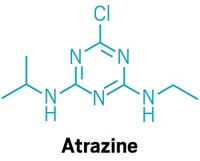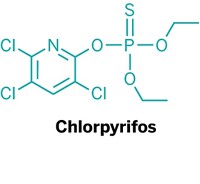Advertisement
Grab your lab coat. Let's get started
Welcome!
Welcome!
Create an account below to get 6 C&EN articles per month, receive newsletters and more - all free.
It seems this is your first time logging in online. Please enter the following information to continue.
As an ACS member you automatically get access to this site. All we need is few more details to create your reading experience.
Not you? Sign in with a different account.
Not you? Sign in with a different account.
ERROR 1
ERROR 1
ERROR 2
ERROR 2
ERROR 2
ERROR 2
ERROR 2
Password and Confirm password must match.
If you have an ACS member number, please enter it here so we can link this account to your membership. (optional)
ERROR 2
ACS values your privacy. By submitting your information, you are gaining access to C&EN and subscribing to our weekly newsletter. We use the information you provide to make your reading experience better, and we will never sell your data to third party members.
Environment
EPA Declines To Ban Fluoridation Agent
by Britt E. Erickson
August 19, 2013
| A version of this story appeared in
Volume 91, Issue 33
EPA has denied a petition to ban the use of hydrofluorosilicic acid (HFSA) to fluoridate drinking water. The petition was filed on May 9 by a group of students, faculty, and alumni from American University; it claims that HFSA, a by-product from the phosphate industry, contaminates drinking water with arsenic, lead, and radionuclides. The group urged EPA to ban the use of HFSA in drinking water, a move that would force drinking water plants to switch to pharmaceutical-grade sodium fluoride. In an Aug. 12 response to the petition, EPA acknowledges that the levels of arsenic in HFSA are higher than those in pharmaceutical-grade NaF. But the agency says that the amount of arsenic in drinking water due to HFSA is about 0.08 ppb, which is orders of magnitude lower than EPA’s current limit of 10 ppb for arsenic in drinking water. EPA also says the petitioners provided insufficient evidence that HFSA increases the levels of lead or radionuclides. Factoring in the higher costs of pharmaceutical-grade NaF compared with HFSA, EPA concluded that switching to NaF provides no net benefit.





Join the conversation
Contact the reporter
Submit a Letter to the Editor for publication
Engage with us on Twitter